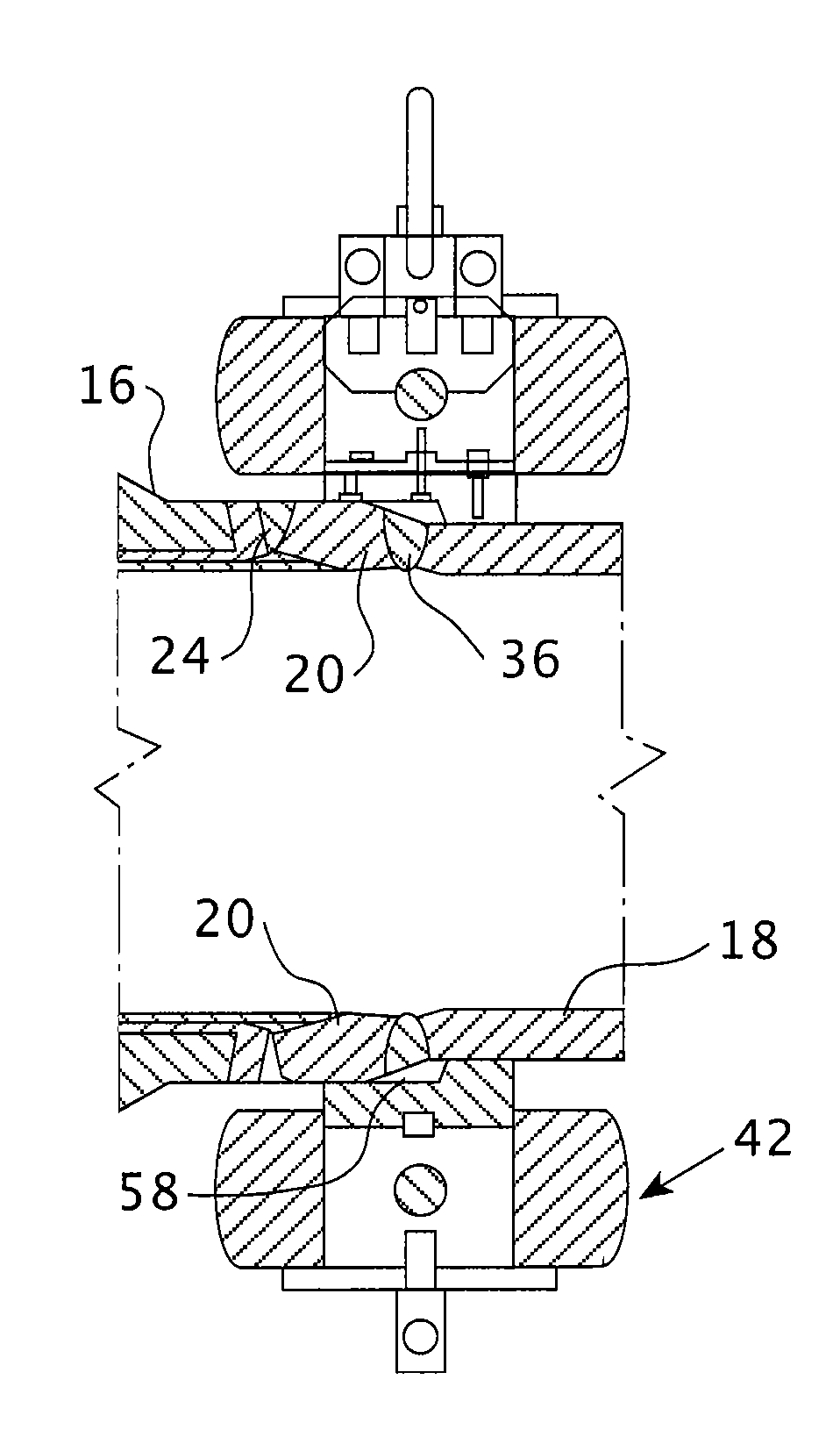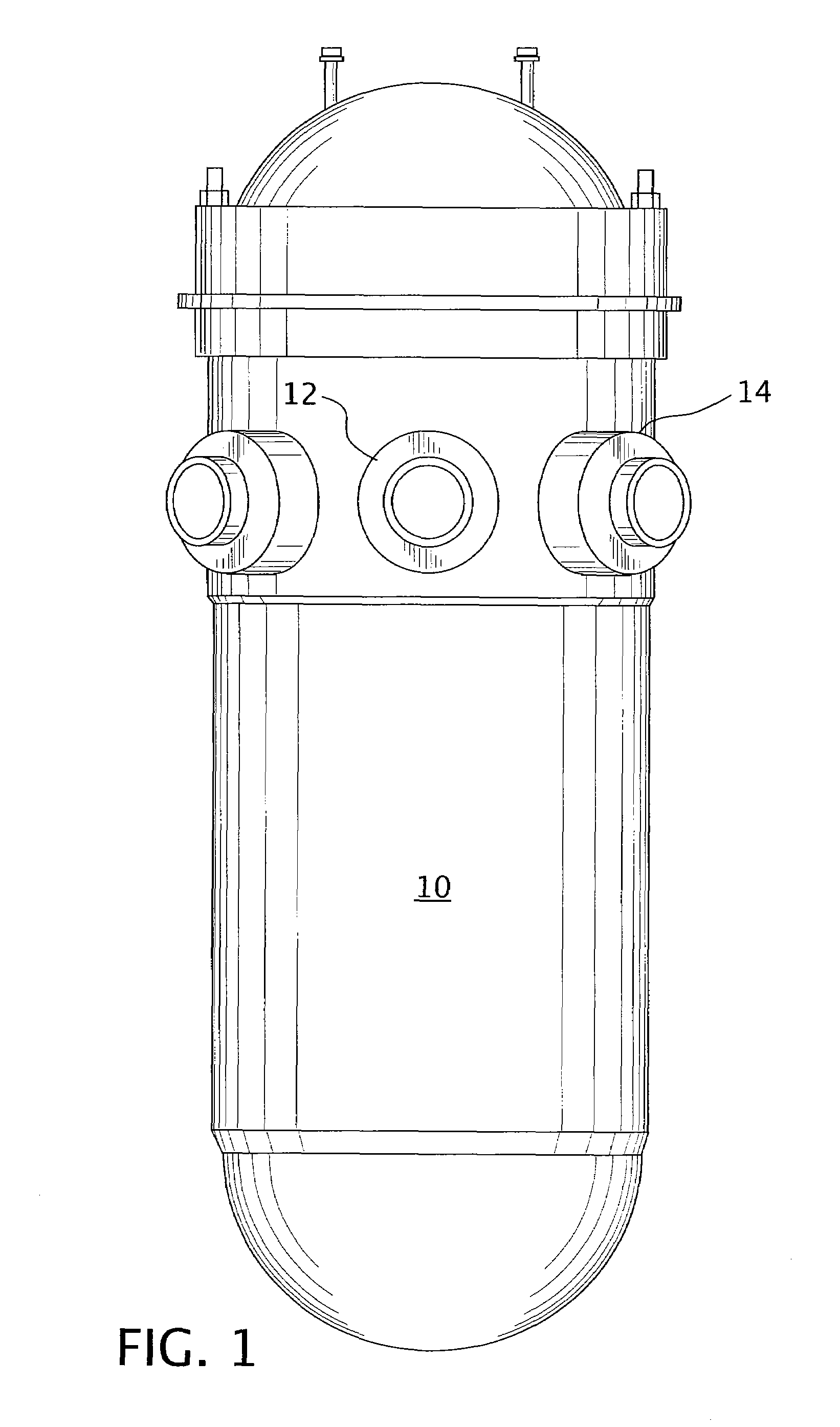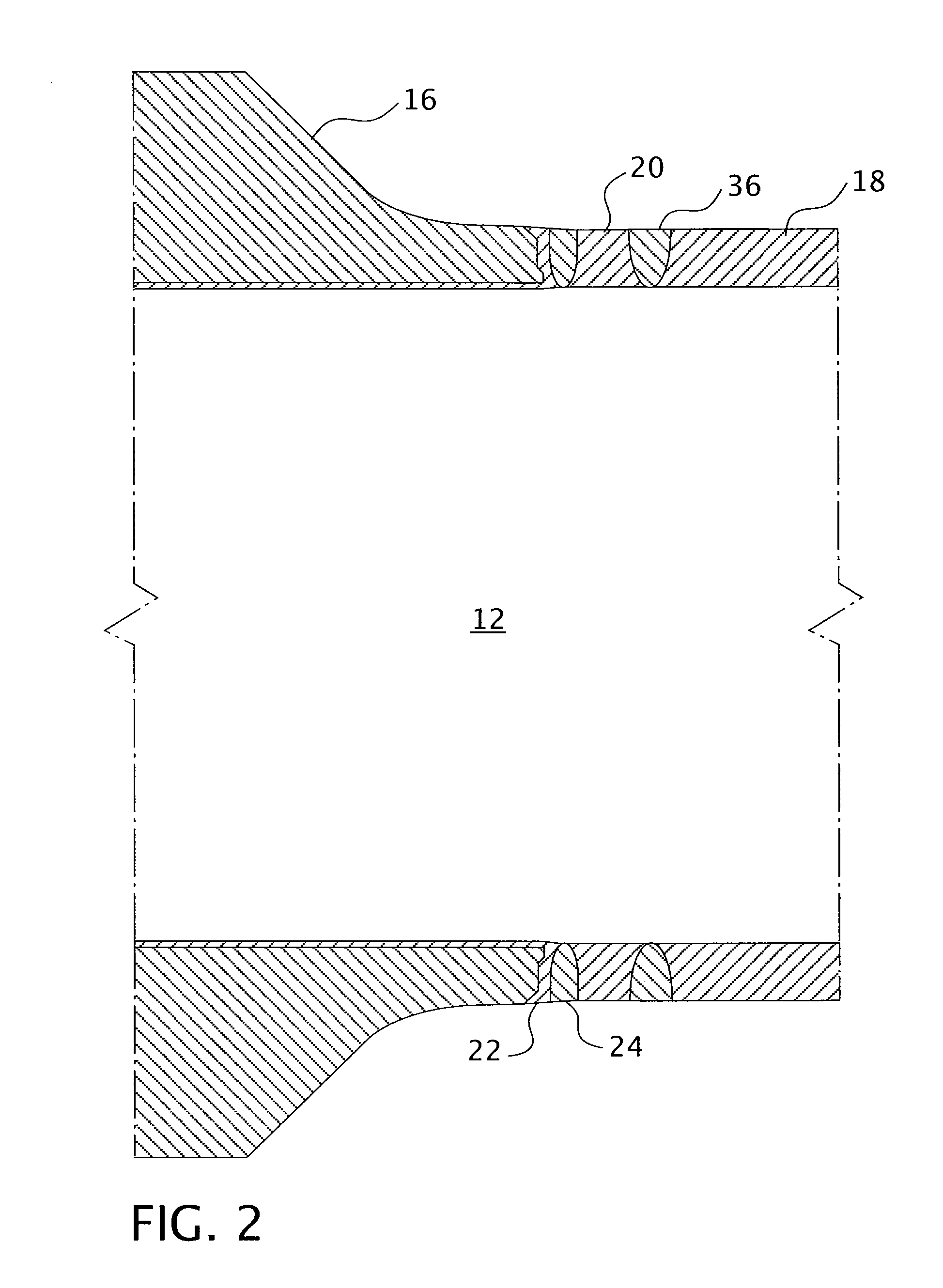Mechanical stress improvement process
a stress improvement and process technology, applied in the field of mechanical stress improvement process, can solve the problems of stress corrosion cracking in stainless steal piping, crack propagation in weld metal, and cracks that have not been fully eliminated in bwr plants, so as to prevent the potential occurrence of primary water stress corrosion cracking
- Summary
- Abstract
- Description
- Claims
- Application Information
AI Technical Summary
Benefits of technology
Problems solved by technology
Method used
Image
Examples
Embodiment Construction
[0027]Pressurized water reactor nuclear steam supply system nozzles in the nuclear reactor pressure vessel upper shell course and in the pressurizer vessel upper and lower heads are normally manufactured with quenched and tempered low alloy steel forgings. Prior to the ASME code required post-weld heat treatment, the nozzle end is buttered with a weld deposit of high nickel-chromium coated electrodes or bare wire (commercially known respectively as Inconel 182 or 82). The minimum thickness of the buttering once machined is typically 0.125″ (0.3175 centimeters).
[0028]After post-weld heat treatment of the pressure vessel component and the machining of the buttered nozzle end to obtain a suitable bevel, the buttered nozzle end is normally welded to an austenitic stainless steel transition piece normally referred to as the nozzle safe-end. The nozzle safe-ends are welded to the reactor vessel and pressurizer nozzles by the pressure vessel manufacturer after post-weld heat treatment, but...
PUM
| Property | Measurement | Unit |
|---|---|---|
| compressive stresses | aaaaa | aaaaa |
| residual tensile welding stresses | aaaaa | aaaaa |
| circumferential compressive stresses | aaaaa | aaaaa |
Abstract
Description
Claims
Application Information
 Login to View More
Login to View More - R&D
- Intellectual Property
- Life Sciences
- Materials
- Tech Scout
- Unparalleled Data Quality
- Higher Quality Content
- 60% Fewer Hallucinations
Browse by: Latest US Patents, China's latest patents, Technical Efficacy Thesaurus, Application Domain, Technology Topic, Popular Technical Reports.
© 2025 PatSnap. All rights reserved.Legal|Privacy policy|Modern Slavery Act Transparency Statement|Sitemap|About US| Contact US: help@patsnap.com



